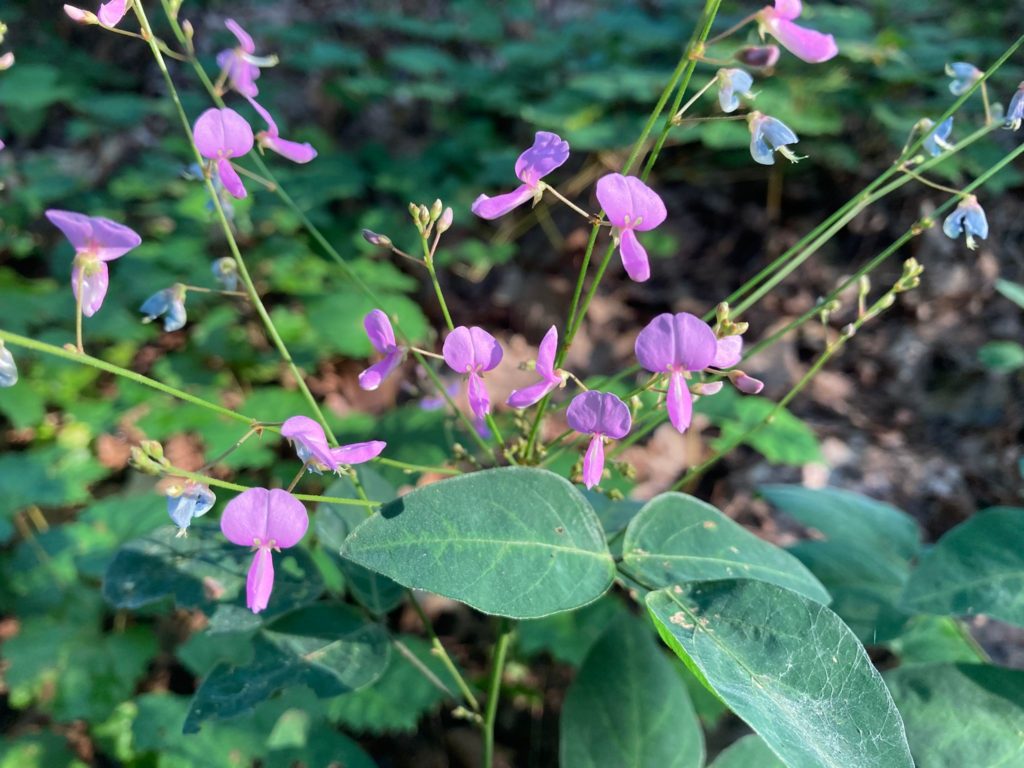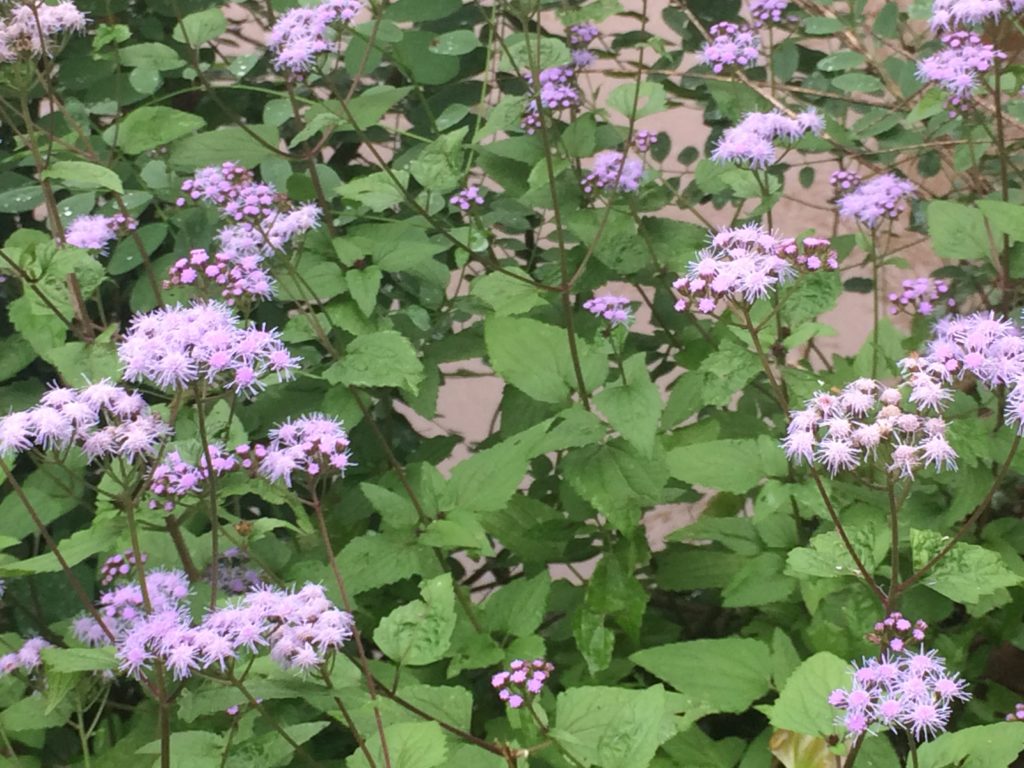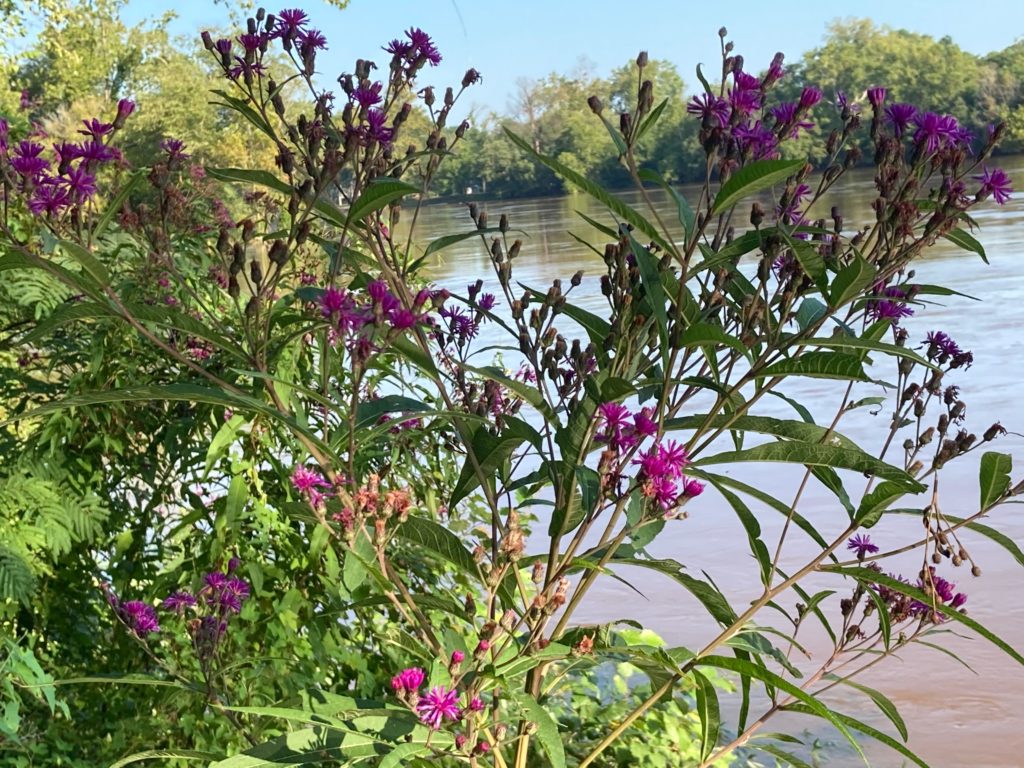
First it’s the crickets in early morning. Next it’s the light: the shifting, slanting gentle light of late afternoon. We are turning toward the night-day balance of the autumn equinox. The crickets and the angle of the light seem to signal that it’s a good time to be still and quiet, to pay attention. The wildflowers of waning summer are one of the rewards. In late August and early September there is much to see in bloom along the river — and hopefully in your own yard. Let’s start there.
I was busy listening to the crickets through an open window and avoiding my work when I noticed—really noticed—the seasonal profusion of Tick-trefoil accenting our walkway and paths.

If the common name doesn’t put you off, the seedpods to come will really grab you (mostly by your pantlegs). Tick-trefoil — genus Desmodium — is a perennial legume spread by its seeds. There are 20 Desmodium species native to Virginia, at least nine of which can be found in the Richmond area. I haven’t gotten a positive identification on mine, but my best guess is Desmodium glabellum. I suspect that Desmodium in yards frequently suffers the fate of native
species vulnerable to being labeled as “weeds”, but those delicate orchid-like flowers on wispy stems are a late summer joy and their seeds are a valuable wildlife food source while the foliage provides good cover.

This particular species of Desmodium likes the dry upland woods of our yard. But along the James River nearby, other native species are heralding the end of summer. What can you see while taking a walk along the river? Here are just a handful:









